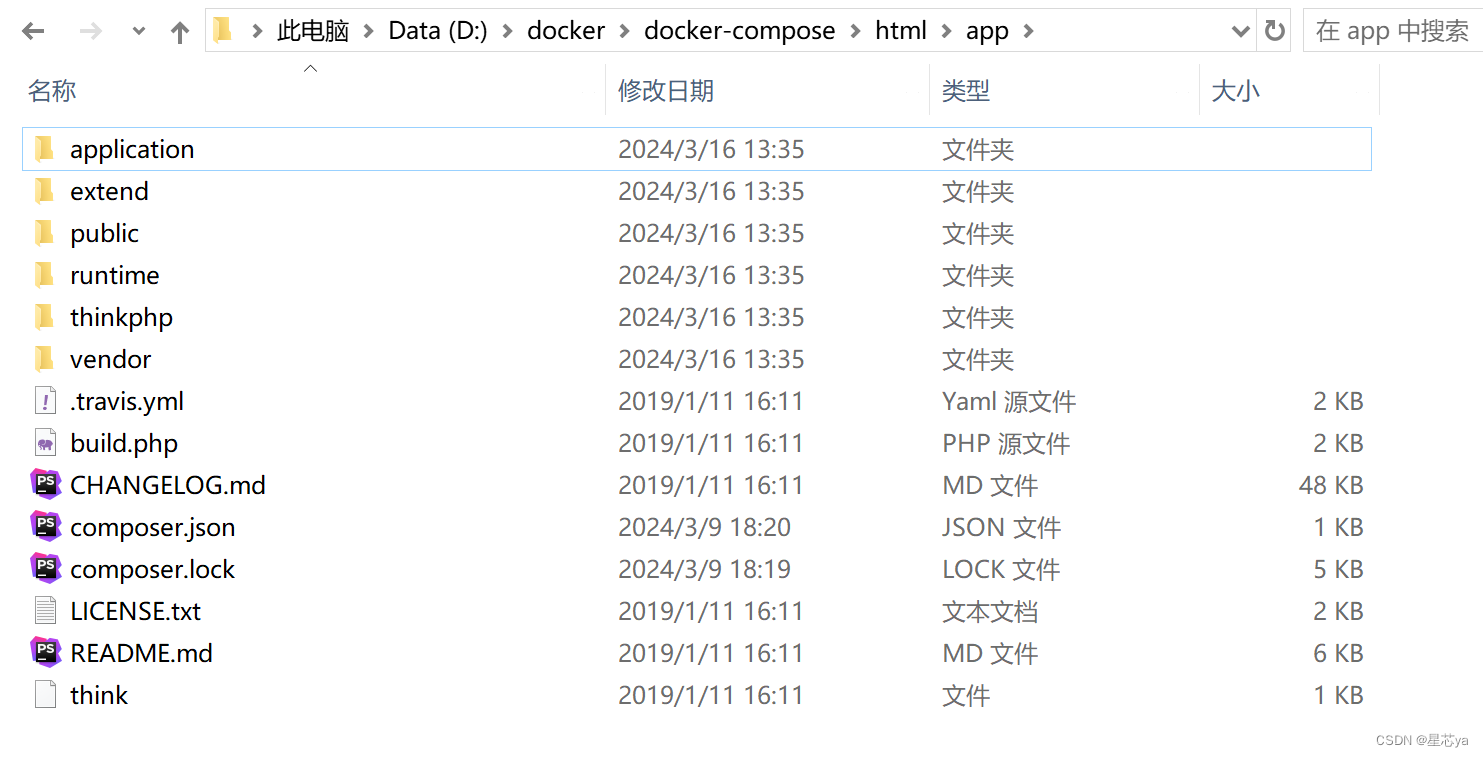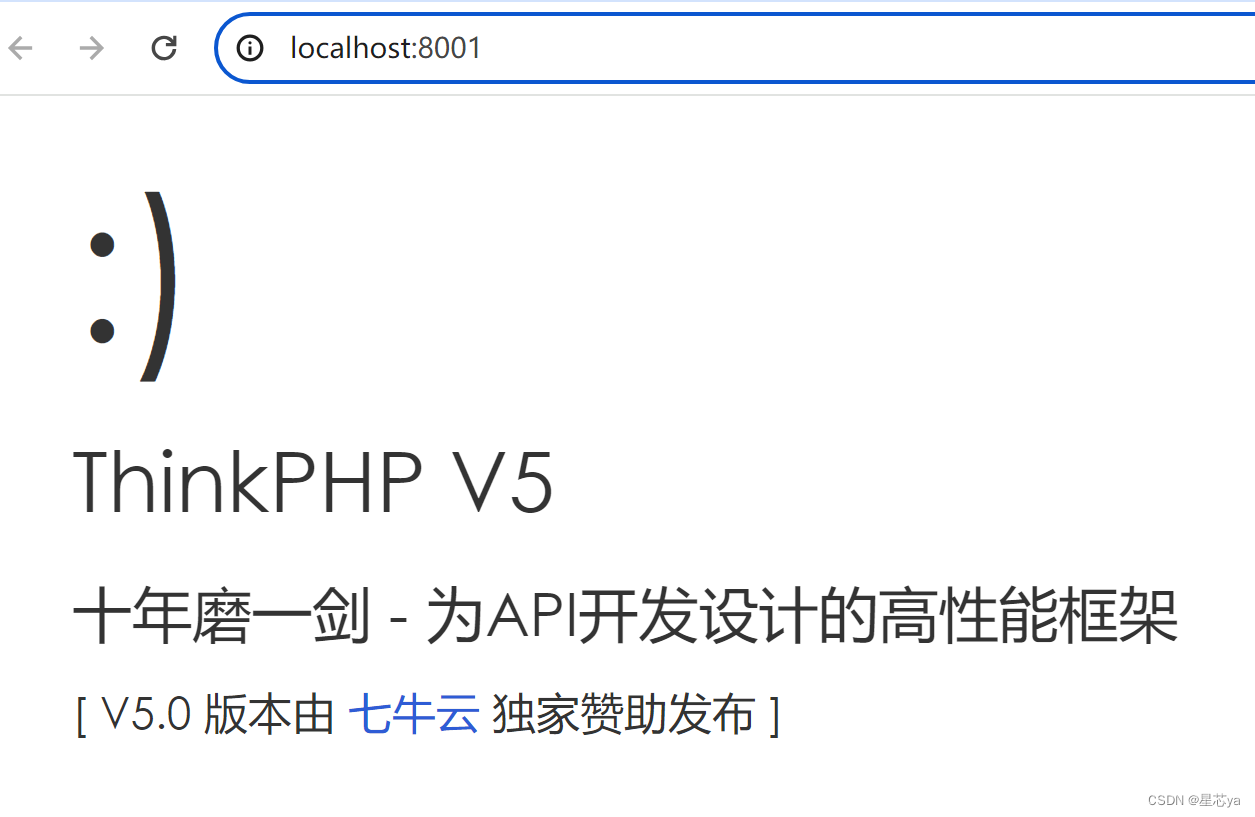TIP
# This article: Building nginx+PHP Access Thinkphp5 Using Docker Compose Locally on Windows
Preface: Following the previous article on deploying thinkphp5 locally on Windows using Docker+nginx+MySQL, this issue uses Docker Compose to build an environment to access the thinkphp5 program.
# Step 1: Preparation work
Check if Docker Compose is installed locally (cmd terminal input Docker Compose - v detection, Docker Desktop installation is default). Make sure you understand the basic Docker Compose syntax.
# Step 2: Create the Docker Compose.yml file
It's okay if you don't understand the Docker Compose syntax, to avoid unnecessary nonsense. Directly post Docker Compose.yml content
#docker-compose VERSION
version: '3'
# Creating a service can be understood as creating a container.
services:
# Pulling nginx images
nginx:
# IMAGE version
image: nginx:latest
# EXPORT port 80
ports:
- "8001:80"
# Mount host files (host files: container files)
volumes:
- ./default.conf:/etc/nginx/conf.d/default.conf
- ./html:/var/www/html
# Use dependencies on to specify the dependency relationships between services
depends_on:
- php
# The network on which the service depends
networks:
- app-network
# Pulling a PHP-FPM image
php:
image: php:7.4-fpm
volumes:
- ./html:/var/www/html
networks:
- app-network
# Define network
networks:
# NETWORK NAME
app-network:
# Network driver type
driver: bridge
2
3
4
5
6
7
8
9
10
11
12
13
14
15
16
17
18
19
20
21
22
23
24
25
26
27
28
29
30
31
32
33
34
35
# Step 3: Start Docker Compose to build the service
- The default. conf content of the nginx configuration file is as follows:
server {
listen 80;
index index.php;
server_name localhost;
error_log /var/log/nginx/error.log;
access_log /var/log/nginx/access.log;
root /var/www/html/app/public; # The public directory pointing to the thinkphp program inside the container
# location / {
# try_files $uri $uri/ /index.php?$query_string;
# }
# Hide entrance file index.php
location / {
if (!-e $request_filename){
rewrite ^(.*)$ /index.php?s=$1 last; break;
}
}
location ~ \.php$ {
fastcgi_pass php:9000; # The PHP container name and port to be started, using localhost: 9000 locally, do not need to be changed in this example
fastcgi_param SCRIPT_FILENAME $document_root$fastcgi_script_name;
fastcgi_param PATH_INFO $fastcgi_path_info;
include fastcgi_params;
}
}
2
3
4
5
6
7
8
9
10
11
12
13
14
15
16
17
18
19
20
21
22
23
24
25
- The local file directory is as follows:


- Start Build: Start Docker Compose.yml Start the cmd terminal in the directory where the Docker Compose. yml file is located and enter Docker Compose up;
The successful startup result is as follows: - d indicates running in the background without outputting any results to the terminal.

Upon checking the Docker Desktop, the result is as follows: it has been successfully built.

Visit localhost: 8001 to view the effect:

Are you very familiar with it, hahaha!
Conclusion: It's fun to configure using Docker Compose. Once all the above is configured, you can happily use Thinkph5 to write business.
